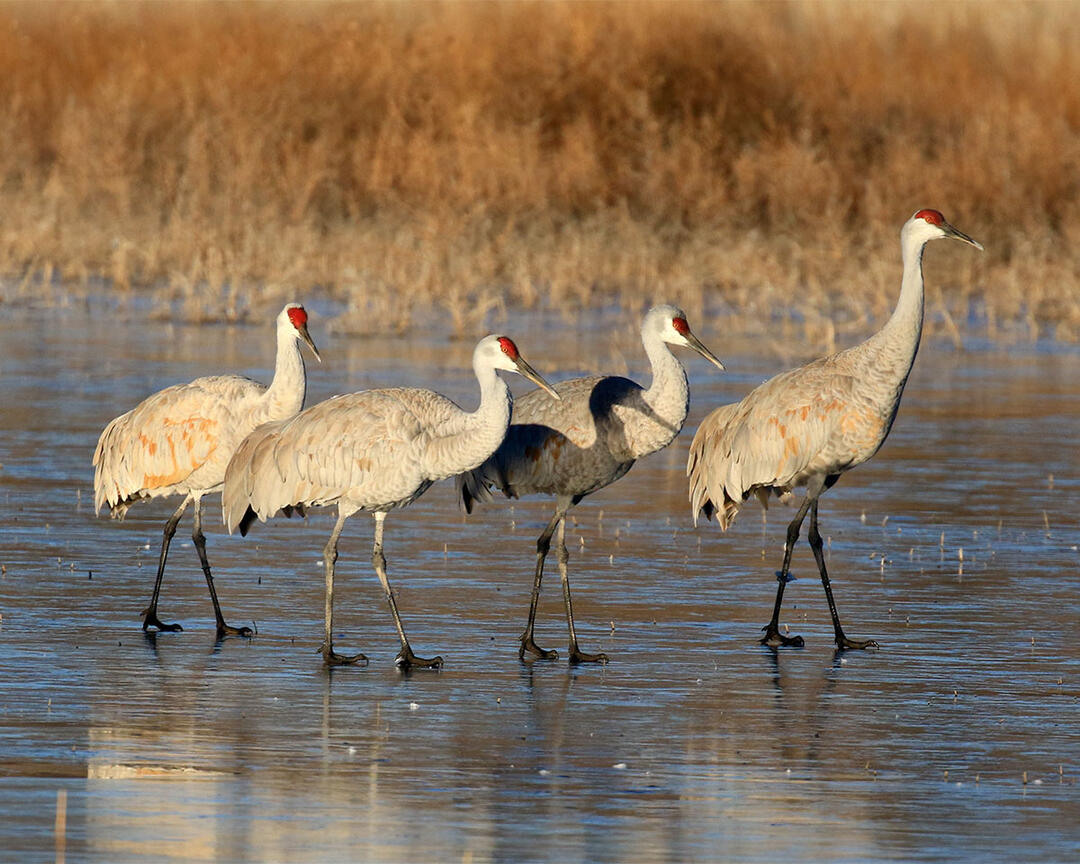Participants in Cache Valley’s 2023 annual Christmas Bird Count (CBC) enjoyed a clear, calm day that warmed into the low 30’s. Eric Bingham and others organized our dedicated crew in continuing the long-standing tradition in this, Logan’s 68th annual CBC. Eric ably tackled recording, powered by our pizza dinner. Eric plus his son Thomas, Debi Evans, and Jim Cane continued with compilation and reporting to Audubon. Hilary Shugart and Lyle Bingham devoted hours to locating past participants for recruitment.
The good weather on December 16 was a boon for comfortable bird watching by our flock of committed, capable observers (still being tallied) both in the field and at home feeders. We collectively found 97 species plus five more during count week. More than 46,600 individual birds were counted.
A few Old World species comprised 75 percent of all the birds that we tallied. Happily, our counts of European Starlings (31,500) were thousands less than in recent years (was a murmuration missed?). The sharp recent decline in our pheasant count continued, but conversely, the 193 turkeys we saw was double our 20-year average. Eurasian Collared Dove counts seem to have stabilized at roughly 400 birds. Our Mourning Dove count was worth cooing about, being double our 20-year average. Maybe they can co-exist with Collared Doves.
Individuals of several summer species had neglected to migrate yet, including record numbers of both Sandhill Cranes (54), Blue-winged Teal (12), and even Long-billed Dowitchers (6), birds we rarely see in any December. What weather cue(s) did they miss? The migratory urge also wasn’t heeded by three Hermit Thrushes, two Say’s Phoebes, and one Orange-crowned Warbler. Two (Trumpeter) Swans a-swimming too, but no partridge in a pear tree. We hope those laggard migrants have since headed to warmer climes.
Owling was frustrating, with no Short-eared, Screech, or Pygmy owls announcing their presence at the usual spots. Conversely, diurnal raptors were in good numbers, including ten-fold more Harriers tallied (108) than last year and as many Cooper’s Hawks as our previous record. Sparse snow cover should favor good rodent hunting.
For a fifth year, a small local flock of Great-Tailed Grackles was seen swaggering about, joining the ranks of established winter newcomers, including both the Eurasian Collared Dove as well as our own Lesser Goldfinch. Several eastern vagrants showed up too: a White-Throated Sparrow plus two Eastern Bluejays that were seen during counting week and at feeders earlier in the month.
Some species are counted in many sectors and have consistent numbers every year. These include Downy Woodpeckers, Magpies, Juncos, Northern Flickers, and American Kestrels. American Tree Sparrows were scarce (4) out in the valley, only 25 percent of our usual tally. Declining sightings of Wilson’s Snipe over the last 10-15 years reflect the loss of remnant wetlands to paving, piping, and draining, particularly for subdivisions on the benches. Old haunts of Wood Ducks have likewise disappeared (with none counted in a decade), but our roamers found ten hanging out in a previously unchecked spot near Willow Park! A record 57 Buffleheads were also seen. The elusive Pacific Wren was only seen during count week. They’re never common. Irruptive species were absent from our count, although Evening Grosbeaks and Cassin’s Finches have been seen this December. Last year’s massive flocks of snazzy Bohemian Waxwings only showed up later in winter. Interestingly, 275 of those also graced the first count here back in 1956, when Cache County’s human population was only 35,000.
Our count relies entirely on the keen eyes, identification skills, and perseverance of our volunteer birders. We thank Eric and Debi for fussy hours spent organizing and later compiling the count for Audubon. We greatly appreciate so many stalwarts sticking with our count, particularly sector leaders, plus returning new regulars. Unlike the bad COVID years, we were able to host some newcomers too. As a consequence, there has been no gap in the continuum of our local CBC over the past half-century.







